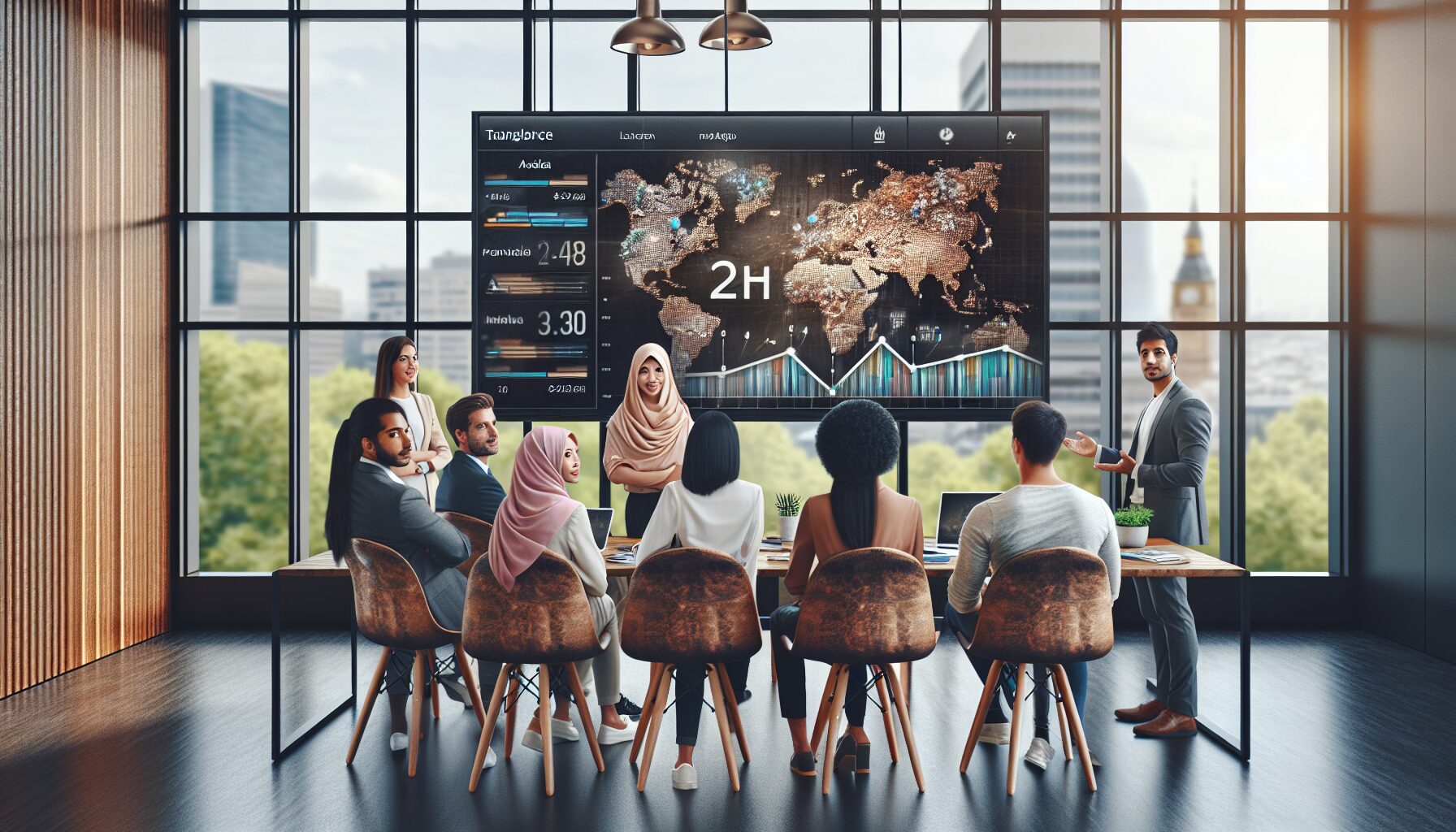About eldris
At Eldris, we automate SEO, multilingual site expansion, and EU compliance for brands scaling across Europe. Our AI-powered platform handles everything from content publishing to regulatory docs—so you don’t have to.
In This Article
- Multilingual website cloning ensures rapid and consistent expansion across European markets.
- Combining automation and human localisation yields impactful, culturally aligned content.
- Proper SEO configuration and compliance with EU laws are vital to success.
- Tools with automation, quality pipelines, and dynamic translation memory are critical.
- Monitoring and maintaining cloned sites is an ongoing but manageable task with the right systems.
Why Multilingual Cloning Matters for European Ecommerce
The case for scalability and localisation
In the ever-expanding digital ecosystem, multilingual website cloning has emerged as a cornerstone of ecommerce success in the European Union. With 24 official languages and a strong cultural emphasis on localisation, brands need to go beyond translation and offer immersive, linguistically tailored user experiences. Multilingual website cloning enables businesses to replicate their existing digital infrastructure into multiple language versions efficiently, while maintaining brand identity, design consistency, and structural integrity.
European consumers are significantly more likely to complete transactions when content is presented in their native language. In fact, research has consistently shown that over 70% of users prefer to engage with ecommerce websites in their mother tongue. Consequently, multilingual website cloning allows enterprises not only to reach broader demographics but also to localise content in culturally appropriate ways, thereby improving trust and loyalty across markets.

Core Benefits of Multilingual Website Cloning
Simplifying expansion and boosting SEO
There are several advantages to adopting multilingual website cloning as part of your growth strategy. First and foremost is the ability to rapidly scale and launch language-specific sites without incurring the manual burdens often associated with traditional translation routes. Since structural elements, templates, and product taxonomies are replicated in full, time to market is significantly reduced.
From an SEO standpoint, multilingual website cloning provides exceptional opportunities to rank for region-specific keywords in different languages. This not only increases visibility on localised search engines like Google DE or Google FR, but also improves domain authority through regionally diversified backlink profiles. When implemented correctly, cloned websites enhance both organic traffic and conversion rates, driving measurable revenue gains across target territories. Moreover, cloned sites can be hosted on country-specific domains (ccTLDs) or subdirectories, allowing businesses to tailor the URL structure to regional SEO best practices.
Choosing the Right Automation Tools
Evaluating SaaS cloning solutions
As technology advances, numerous software-as-a-service (SaaS) solutions have emerged to streamline the multilingual website cloning process. Platforms such as Weglot, Transifex, and Lokalise offer robust automation features that allow real-time content synchronisation, continuous localisation workflows, and integration with CMS systems like WordPress, Shopify, or Magento.
When selecting a tool, important criteria should include scalability, ease of integration, translation management system (TMS) capabilities, and support for SEO-critical elements like hreflang tags and XML sitemaps. Many solutions now employ AI-assisted translation engines alongside human quality assurance reviews, enabling a hybrid localisation model. Ideally, the platform should accommodate iterative workflows—i.e., update cycles, content approval gates, and automated alerts for newly added content blocks.
Compliance with EU Regulations
Meeting language and legal requirements
European Union member states enforce various regulations concerning language usage, privacy, and accessibility. Therefore, multilingual website cloning should always be executed with a focus on compliance from the outset. For example, under the EU Web Accessibility Directive and the General Data Protection Regulation (GDPR), linguistic accuracy is essential not just for user experience but also for legal adherence.
Cloned websites should include legally compliant versions of terms and conditions, cookie consent banners, and privacy notices in every relevant language. Additionally, markets like France and Belgium have particularly stringent rules regarding language exclusivity in marketing literature, which means direct translations might not suffice. For clone deployment in those countries, employing local legal experts during the content verification process is best practice. This not only mitigates risk, but also reinforces trustworthiness among local users.
Automating Translation vs. Human Localisation
Balancing speed, quality, and accuracy
One of the most debated aspects of multilingual website cloning is the choice between automated machine translation and human localisation. Automated tools offer considerable speed benefits and are cost-effective for cloning large volumes of content. However, they may lack the nuance required for culturally sensitive messaging or industry-specific terminology.
In contrast, human localisation provides enriched contextual relevance, preserving intent, tone, and emotional nuance across different markets. While this may increase project costs, the return on investment is usually higher due to increased user engagement and reduced bounce rates. A balanced approach is often ideal—automating the bulk translation process while assigning linguists to polish high-profile or legally significant content ensures both efficiency and quality. Some SaaS platforms allow such hybrid models through collaborative dashboards and AI-assisted workflows.
Implementing Multilingual SEO Best Practices
Technical structure and hreflang strategy
Effective SEO is indispensable for the success of any multilingual cloning initiative. Technical configurations such as XML sitemaps, canonical URLs, and hreflang tags must be properly implemented to distinguish between language versions and prevent duplicate content penalties. Hreflang tags in particular help search engines understand the relationship between language variants, ensuring that users are presented with the most contextually relevant version of your site.
Site architecture also matters. Businesses must decide between subdirectories (e.g., /de/, /fr/), subdomains (e.g., de.example.com), or country code top-level domains (e.g., example.de). Each approach carries SEO implications. Subdirectories are easier to manage, while ccTLDs communicate stronger regional signals to search engines. Additionally, maintaining translation consistency for meta descriptions, headings, and alt image texts ensures a holistic multilingual SEO strategy.
Common Pitfalls and How to Avoid Them
Lessons from real-world cloning projects
Multilingual website cloning is powerful but rife with potential pitfalls. A common error is overlooking regional cultural norms, which can result in content that feels tone-deaf or even offensive. Literal translations without cultural adaptations often alienate potential clients.
Another frequent mistake involves improper URL mapping or mistagged hreflang attributes, leading to SEO conflicts and significant drops in ranking. Moreover, not distinguishing between global and local site-wide announcements—such as promotions or alerts—can cause communication mishaps.
To avoid these issues, always conduct A/B testing and user feedback loops in each target language. Employ region-specific QA teams prior to launch. Equally, update cycles must be synchronised across all language versions to maintain consistency and prevent outdated content from lingering on certain clones.
Case Study: EU Ecommerce Brand Expansion
Practical cloning execution and ROI
A midsized fashion retailer in Germany sought to penetrate markets in Italy, Spain, and the Netherlands. They employed a multilingual website cloning strategy using a hybrid SaaS platform combined with human localisation experts from each locale.
The cloned sites maintained identical architecture while offering region-adjusted content. For example, product descriptions incorporated colloquial terms specific to each culture, and promotions were timed around national holidays. With these measures in place, organic search traffic increased by over 50% in 90 days. Conversion rates rose by 30% in Italy and 25% in Spain.
By leveraging Learn more about International Website Localisation and Expansion, the retailer also fine-tuned their multilingual SEO configuration, including structured data updates and tailored meta assets. Within six months, the brand saw a 300% return on investment and established long-term presence in three new territories without needing additional physical stores.
Monitoring Site Performance Post-Launch
Analytics benchmarks for multilingual success
After deploying multilingual cloned sites, businesses must monitor performance with region-divided analytics dashboards. Key performance indicators (KPIs) should include session duration, bounce rate, exit pages, and conversion rates—all segmented by language and geography. Multilingual website cloning can only deliver long-term value if performance is actively tracked and optimised.
Implement event tracking for culturally specific features, such as region-driven product sorting or customer support interactions. Also evaluate SEO health through tools like Search Console’s International Targeting report. Adjust content and offers based on multilingual behavioural data. Performance indicators should inform both marketing and product roadmap revisions for each localisation.
Scaling Maintenance for Multiple Language Sites
Update pipelines and automation flows
Maintaining cloned websites is a continual process that requires intelligent automation. Version control, translation memory, and synchronised update triggers are essential. CMS plugins and SaaS platforms now offer pipelines that push updates automatically to all language versions upon approval, ensuring parity across territories.
Create a structured workflow for global updates that separates universal changes (e.g., terms and conditions) from region-specific content pieces (e.g., national promotions). Implement notification systems for content managers to verify quality regularly. By integrating tools that sync with Best practices for building multilingual sites, teams can track real-time translation status, identify bottlenecks, and monitor linguistic QA flags.
“Without multilingual website cloning, our EU expansion would have stalled. The automated cloning solution saved us weeks of manual work and doubled our reach.” — Digital Head of Ecommerce for a European Retail Brand
Conclusion: Replicate Growth with Cloning Technology
Multilingual website cloning empowers ecommerce brands to extend their digital footprint across the European Union with precision, scalability, and compliance. Unlike simple translation, cloning encompasses a comprehensive replication of design, structure, and content. When executed using the right tools and best practices, it supports consistent UX, regional SEO optimisation, and faster revenue realisation.
By respecting legal frameworks and cultural sensitivities, businesses can engage local audiences authentically, increasing brand visibility and trust. Investing in multilingual website cloning today is not just about internationalisation—it’s about future-proofing your ecommerce operation for the next wave of digital commerce. Take the first step by exploring technologies such as Read a related article or checking the latest multilingual SEO trends at Launching rapid EU growth with site cloning.
Great guide on ultimate-guide-multilingual-website-cloning-eu – Community Feedback
What is multilingual website cloning?
Multilingual website cloning is the process of duplicating your existing website and automatically translating its content to serve different languages or markets, allowing for faster international expansion and improved user experience across regions.
Why is website cloning important for EU ecommerce?
Cloning enables online stores to quickly enter multiple European markets with locally relevant websites, ensuring compliance with regional regulations and improving SEO reach in each target language.
How does automated site cloning work?
Automated site cloning platforms copy your original site structure and content, use AI-powered translation, adapt for local SEO, and handle technical aspects like hreflang, enabling reliable and efficient deployment at scale.








